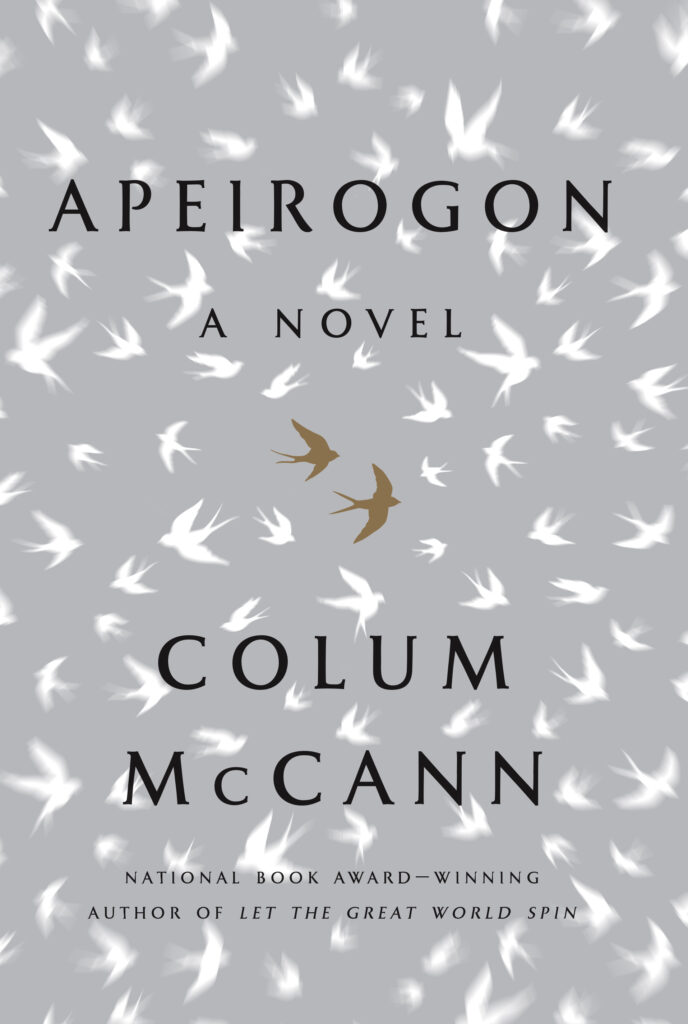
I’ve been reading quite a lot over the past couple of months, and want to recommend two books that have brought me immense pleasure during a challenging time. Each is noteworthy for different reasons.
The first is a page-turner that’s built upon the harrowing but also laugh-out-loud and stop-you-in-your-tracks details its author has unearthed and pieced together around the airborne bombing of London from May, 1940 to May, 1941. The book is Eric Larson’s The Splendid and the Vile, and it features the overheard statements and personal accounts of Winston Churchill (who, at 65, is Britain’s new prime minister when the book begins) as well as statements from his inner circle, family members, earshot diarists and a host of Londoners who were about to experience one of the worst and, on occasion, one of the best years of their lives. I found Larsen’s chronicle both bracing and timely as we absorb 2020’s assaults from a similarly vengeful host of external enemies and personal demons.
My second recommendation engrosses with its high-wire act of storytelling. Apeirogon by Colum McCann uses snippets (a line, a couple of paragraphs, sometimes a photograph) to tell at least 1001 interrelated stories that illuminate, in often magical ways, the central drama that unfolds here. It involves the coming together of a Palestinian and an Israeli father. Each has lost a child in the seemingly endless strife between tribal imperatives, but these extraordinary men somehow manage to find common cause for the sake of their pasts as well as their futures. Given America’s increasingly existential divides, Apeirogon also resonates deeply as we struggle to live and work together sanely today.
Both books are unfortunately titled. Neither what was “splendid” nor what was “vile” about this phase of World War II were nearly as extraordinary as the adaptability, courage, sense of humor, ambition, discipline, personality, or throbbing humanity of London’s inhabitants during the Blitz. For its part, “apeirogon” is a word that would stump even a crossword puzzler. It’s defined as a structure with too many sides to count, and therefore apt given McCann’s seemingly endless angles into his central story—but it too fails to suggest the emotional depths that he manages to reveal here. Don’t be put off by the titles of either book.
Here are a few more words about The Splendid and the Vile and Apeirogon that might convince you to dive into one or both of them.

It is personal diaries and memoirs, some of them newly available, that give The Splendid and the Vile (“The S&V”) it’s wonderfully intimate and telling point of view. For example, take this recollection from the early summer of 1940. Churchill is anticipating the fall of France from the advancing Nazi forces as well as the first bombing raids over Britain: “the softening up” that would precede the expected German invasion. Despite his worries about his nation’s ability to stand against the Nazis alone—the US is still publically proclaiming its neutrality and isolation—Churchill had no doubt whatsoever that if anyone can lead his country in its darkest hour it is him, and he revels in his self-confidence.
Some of the best passages inThe S&V interweave the worse forebodings and Churchill’s moody responses with startling periods of gaiety after a good dinner and rivers of champagne with senior advisors, family and friends at Chequers, the prime minister’s official residence. It is the place where Churchill could refortify himself today for whatever challenges will be coming his way tomorrow. It is also where his effervescence had its most emboldening effects on those who shared the weight of the war effort with him.
Churchill felt more at ease at Chequers, and understood that here he could behave as he wished, secure in the knowledge that whatever happened within would be kept a secret (possibly misplaced trust, given the memoirs and diaries that emerged after the war, like desert flowers after a first rain). This was, [Churchill] said a ‘cercle sacre.’ A sacred circle.
Sometime later Alan Brooke, who was the Commander in Chief of the Home Forces, recalled one of those nights. It was:
when Churchill, at two-fifteen a.m., suggested that everyone present retire to the great hall for sandwiches, which Brooke, exhausted, hoped was a signal that soon the night would end, and he could get to bed.
’But no!’ he wrote.
What followed was one of those moments often to occur at Chequers that would remain lodged in visitors’ minds forever after.
’He had the gramophone turned on,’ wrote Brooke, ‘and, in the many-colored dressing gown, with a sandwich in one hand and watercress in another, he trotted round and round the hall, giving occasional little skips to the tune of the gramophone.’ At intervals as he rounded the room, he would stop ‘to release some priceless quotation or thought.’ During one such pause, Churchill likened a man’s life to a walk down a passage with closed windows. ‘As you reach each window, an unknown hand opens it and the light it lets in only increases by contrast the darkness at the end of the passage.’
On another Chequers evening, when Churchill and others had spilled outside during an air raid–he loved to watch what was happening in the night skies–a similar display of confidence and personality led another high-ranking diary keeper to exclaim: “What a tonic he is!”
The S&V is a master’s assemblage of day-to-day recollections about Churchill as well as the general mood of the country from a cast of characters that extends from the Buckingham Palace to the East End. For example, there is Churchill family intrigue, as in the chapter Larson mischievously calls “White Gloves at Dawn” about Churchill’s wife Clementine or “Clemy” (“When angry, Clementine had a habit of wearing white gloves. She was wearing them now.”) In another chapter, we learn about the practical side of “defending the homeland” from a pamphlet which described, in detail, what to do if a Panzer tank suddenly appears in your neighborhood (“Jab a crowbar into the point where the tank’s steel tread passes over a guide wheel.”) And on the startling refreshment of a child’s clear eyes when everything else seems up for grabs, there is this:
The [nightly bombing] raids generated a paradox: The odds that any one person would die on any one night were slim, but the odds that someone somewhere in London would die were 100 percent. Safety was a product of luck alone. One young boy, asked what he wanted to be when he grew up, a fireman or pilot or such, answered:
’Alive.’
And we think we have problems homeschooling our children.
One reviewer said that this book provides “the kind of wrenching, carefully chosen facts that not only bring a story to life but also make a reader stop, look up and say to whoever happens to be nearby, ‘Listen to this.’” And she’s right! On nearly every page, The S&V brings perspective to our tribulations today, while revealing more of a life force in its parade of characters than seems humanly possible. I’d be surprised if you didn’t feel better about just about everything after reading it.

What distinguishes Apeirogon and accounts for its emotional wallop is the way that Colum McCann tells the story.
First of all, it’s not exactly fact and not exactly fiction, but a mix of the two. Interwoven in small fragments, there is a tremendous amount of information provided about the Israeli/Palestinian conflict over the years as well as about the political and natural history of the region. At the same time, a 1001 stories from the Arabian Nights, stories about legendary heroes who happened to be Jews or Arabs, and fragments of songs passed on through generations leaven “the facts” with more metaphorical ways of understanding what has happened and continues to happen in this ancient land.
The two fathers at the convergence of fact and fiction are Bassam, who is Palestinian, and Rami, an Israeli. In their grieving over the needless deaths of their daughters, Samadar and Abir, in different terror-driven incidents, these battle hardened men cautiously strive for a measure of forgiveness and reconciliation. Their story and the stories that surround it are assembled by McCann like you would a mosaic. For example, here are story fragments that he rubs up against prior lines and paragraphs about the use of slingshots in the Middle East, the apocryphal giant-slaying David from the Old Testament, and his daughter’s random death from thrown explosives:
169
The plutonium core of the Nagasaki bomb was the size of a throwable rock.
170
And we think the myths are startling.
171
Often Rami thinks of this: but for an accident of cloud vapor—a small defect in the weave of atmospheric weather—seventy-five thousand lives were lost in one place and preserved, then, in another.
172
But for a turn toward the book store. But for an early bus. But for a random movement on Ben Yehuda Street. But for a trip to Ben Gurion airport to collect her grandmother. But for a late sleep-in. But for a break in the babysitting routine. But for the homework to do later that night. But for the crush of pedestrians on the corner of Hillel Street. But for the hobbling man that she [Abir, his daughter] had to loop around.
173
Geography is everything.
His first magic trick is McCann’s ensuring that his readers never get lost in all of these counterpoints. For example, we already know how, where and when Adir was killed and that Rami obsessively replays the circumstances that took his daughter from him and can never bring her back.
In this author’s masterful hands, one piece in the mosaic plays off another—over and over again—providing larger and smaller understandings of what is happening to Bassam, Rami and the elemental forces that are swirling around them. That accounts for the second magic trick, which is how deeply we get immersed in the overlapping storylines about checkpoints, bird migrations, hawk hunting, surveillance drones, the importance of tunnels and of access to water in Israel and on the West Bank: seemingly everything that contributes to memories and anticipations. I spent time in Jerusalem a few years ago and was regularly amazed as I read along at how vividly the layers of the place were recalled for me.
According to one of Apeirogon’s reviewers, the unusual structure of its storytelling enables readers:
to move beyond an understanding of Rami and Bassam’s grief from the outside; [indeed] we begin to share it…. By replicating the messy nonlinear passage of time, by dealing in unexpected juxtapositions that reveal latent truths, it allows us to inhabit the interiority of human beings who are not ourselves.
There is never a single truth in any story, least of all stories that are as fraught and complex as the ones told in Apeirogon. But as different truths mix and flow over one another, the certainties around each of them begins to soften and something more nuanced and hopeful begins to emerge. At least for me, the alchemy that McCann performs in Apeirogon was always fascinating and sometimes astonishing.
This post was adapted from my September 13, 2020 newsletter. Newsletters are delivered to subscribers’ in-boxes every Sunday morning. You can subscribe too by leaving your email address in the column to the right.